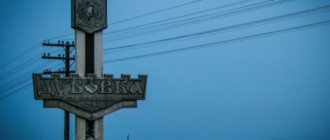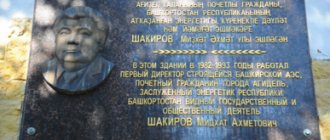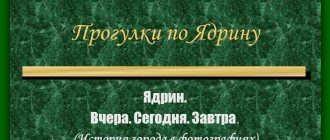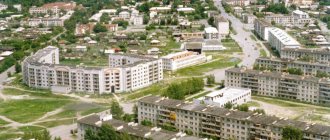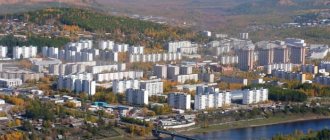City in Tuva, Russia
| Shagonar Shagonar | |
| Town[1] | |
| Other transcription(s) | |
| • Tuvinian | Shagaan-Aryg |
| View of Shagonar | |
| Location of Shagonar | |
| Shagonar Location of Shagonar Show map of Russia Shagonar Shagonar (Republic of Tyva) Show map of the Republic of Tuva | |
| Coordinates: 51°33′N 92°46'E / 51.550°N Latitude 92.767°E / 51.550; 92.767Coordinates: 51°33′N 92°46'E / 51.550°N Latitude 92.767°E / 51.550; 92.767 | |
| A country | Russia |
| Federal subject | Tuva[1] |
| Administrative region | Ulug-Khem district[1] |
| City of district subordination | Shagonar[1] |
| Known since | 1888 |
| City status from | 1945 |
| Height | 560 m (1840 ft) |
| Population (2010 Census)[2] | |
| • Total | 10,956 |
| • Estimate (2018)[3] | 10,995 (+0.4%) |
| Administrative status | |
| • Capital from | Ulug-Khem district[1], Shagonar city of district subordination[1] |
| Municipal status | |
| • Municipal district | Ulug-Khem municipal district[4] |
| • Urban village | Shagonar urban settlement[4] |
| • Capital from | Ulug-Khem municipal district[4], Shagonar town[4] |
| Timezone | UTC + 7 (MSK + 4 [5]) |
| Postal code(s)[6] | 668210, 668218 |
| OKTMO I WOULD | 93654101001 |
Population of Shagonar
| 2010 Census | 10,956[2] |
| 2002 Census | 11,008[7] |
| 1989 Census | 10,084[8] |
| 1979 Census | 5,455[9] |
Shagonar
(Russian: Shagonа́р; Tuvan: Shagaan-Aryg,
Shagaan-Aryg
) is a town and administrative center of the Ulug-Khemsky district in the Tyva Republic, Russia, located on the left bank of the river. The Yenisei River, 124 km (77 mi) west of Kyzyl, is the capital of the republic. As of the 2010 Census, its population was 10,956.[2]
References
Notes
- ^ a b c d f g g hour
Resolution # 1648 ZP-1 - ^ a b c
Federal State Statistics Service of Russia (2011).
“All-Russian Population Census 2010. Volume 1" [All-Russian Population Census 2010, vol. 1]. All-Russian Population Census 2010 [All-Russian Population Census 2010]
(in Russian). Federal State Statistics Service. - "26. The size of the permanent population of the Russian Federation by municipalities as of January 1, 2022.” Federal State Statistics Service. Retrieved January 23, 2022.
- ^ a b c d f
Law No. 268 VX-1 - "On the calculation of time." Official Internet portal of legal information
(in Russian). June 3, 2011. Retrieved January 19, 2022. - Post office. Information and computing center of OASU RPO. ( Post office
).
Search for postal facilities ( Search for postal facilities
) (in Russian) - Federal State Statistics Service of Russia (May 21, 2004). “The population of Russia, the constituent entities of the Russian Federation as part of federal districts, urban settlements, urban settlements, settlements, settlements of 3 thousand or more people.” [Population of Russia, its federal districts, federal subjects, districts, urban settlements, rural settlements - administrative centers, rural settlements with a population of more than 3000 people] (XLS). All-Russian Population Census of 2002 [All-Russian Population Census of 2002]
(in Russian). - “All-Union Population Census of 1989. The current population of union and autonomous republics, autonomous regions and districts, territories, regions, urban settlements and villages. All-Union Population Census of 1979. National composition of the population by regions of Russia” [All-Union Population Census of 1979. Ethnic composition of the population by regions of Russia] (XLS). All-Union Population Census of 1979 [All-Union Population Census of 1979]
(in Russian).
1979 - via Demoscope weekly
(website of the Institute of Demography of the State University - Higher School of Economics.
The city of Shagonar in Tyva
General information about the city of Shagonar The city of Shagonar is located on the left bank of the Yenisei, in the central part of the Tuva Basin, 115 km west of the capital of the Republic of Kyzyl. The Kyzyl-Teeli highway passes through the city. It is the center of the Ulug-Khem region. The city is surrounded by steppes. It received its name in honor of the Tsaganaryg River, which translated means “tsagan” - white, “ryg” - dry riverbed. To make it sound more pleasant, the Tuvans distorted the name, and now the city is called Shagonar. By Tuvan standards, this is a fairly large city, ranking third in population after Ak-Dovurak and Kyzyl. It is approximately 11,000 thousand people: a little more than 80% are Tuvans, 15% are Russians and a small percentage of Khakass and Komi.
History of Shagonar and its infrastructure The settlement was founded in 1888, under the name Shagaan-Aryg. At the beginning of the 20th century, Chinese trading posts were located here, harshly exploiting local arats. This led to Shagaan-Aryg becoming the center of the national liberation movement. In 1912, the Tuvan people rose up to fight the ruling Qing dynasty, which later determined the history of the people of Tuva. In 2014, it became part of great Russia. Shagonar received city status in 1945. It was planned that Shagonar would become the main producer of high quality cement, asbestos, reinforced concrete structures and the main supplier of building materials in Tuva. Deposits of coal, cobalt and building materials were found near the city. But in 1970, it fell into the flood zone when the Sayano-Shushenskoye reservoir was filled and was moved to a new location, a distance of seven kilometers. With the advent of the “sea”, frequent dusty winds began to blow, but on the other hand, with the appearance of a large number of fish, the Tuvans had the opportunity to engage in fishing, organizing teams of fishermen for this. Unfortunately, priceless archaeological sites, rock paintings, petroglyphs and significant forest areas were flooded. The construction of the reservoir resulted in a poorly developed infrastructure of the city. The first houses in Shagonar appeared in 1973, representing streets with modern buildings. In the center of the city there is a House of Culture, where concerts of local artists, shows of folk ensembles and artistic groups of the city and region are often held. Young people and the older generation spend their leisure time here. The city has a sports stadium where competitions among local football and athletic teams are held. There is a whole network of libraries in the city, there are children's schools: music, art, and an arts center has been created. The city has schools, hospitals, kindergartens. Economy of Shagonar The city of Shagonar is the center of an agricultural region: the development of livestock farming communities and small food industry enterprises: a creamery, a bakery and a regional industrial complex. From building materials, individual enterprises produce cinder block bricks and operate a sawmill. There is a printing house in the city. Sights of the city of Shagonar The attraction of the city is the local history museum, the exhibitions of which tell about the development of its culture and industry, as well as the culture and life of the peoples who once lived in these parts. In the Ulug-Khem Archaeological Museum you can see exhibits that have lain in the ground for thousands of years and were found during excavations of burial mounds: ancient weapons, stone arrowheads, tools, stirrups, bits and bronze items.
Religion[ | ]
Since 2012, there has been an Orthodox parish in Shagonar in honor of St. Sergius of Radonezh. For its activities, the parish uses premises rented in the City Administration building. A missionary camp has been operating on the basis of the parish since June 25, 2012[25], whose employees carry out educational work with both adults and children[26]. The Orthodox church and Orthodox community under construction in Colony No. 4 are assigned to the parish[26]. Negotiations are underway with the kozhuun administration to provide land for the construction of an Orthodox church[27]. 90 percent of the population are adherents of Buddhism, Lamaism and shamanism.
Population[ | ]
| Population | ||||||||
| 1959[4] | 1970[5] | 1979[6] | 1989[7] | 1996[8] | 1998[8] | 2000[8] | 2001[8] | 2002[9] |
| 4155 | ↗4512 | ↗5455 | ↗10 084 | ↘8900 | ↗9100 | ↘9000 | ↘8900 | ↗11 008 |
| 2005[8] | 2006[8] | 2007[8] | 2008[8] | 2009[10] | 2010[11] | 2011[12] | 2012[13] | 2013[14] |
| ↗11 200 | →11 200 | ↗11 300 | →11 300 | ↗11 386 | ↘10 956 | ↘10 934 | ↘10 917 | ↗10 966 |
| 2014[15] | 2015[16] | 2016[17] | 2017[18] | 2018[19] | 2019[20] | 2020[21] | 2021[1] | |
| ↘10 905 | ↗10 935 | ↘10 919 | ↗10 973 | ↗10 995 | ↗11 063 | ↗11 182 | ↗11 289 | |
As of January 1, 2022, in terms of population, the city was in 877th place out of 1116[22]cities of the Russian Federation[23].
National composition
According to the 2002 census, out of 11,008 residents of the city, Tuvans made up 81.95% (9021 people), Russians - 15.10% (1662 people), Komi - 0.78%, Khakass - 0.64%[24] .
Natural features
Khayyrakan is a huge depository of limestone ranging in color from black to white. Several times it was planned to build a high-tech cement plant at its foot, but each time the residents of Tuva opposed the construction. There is a unique structure near the mountain - an old lime kiln. Lime was extracted from the mountain, placed in a kiln and, through heat treatment for many days, an excellent building material was obtained.
There are many caves and grottoes on the western slopes of Mount Bear. The gentle slopes of the “Heavenly Bear” are overgrown with bushes and small flowers. In spring, when wild rosemary blooms, the slopes of Khayyrakan turn purple.
© Arthur Mongush
Excerpt characterizing Shagonar
“On the contrary,” said the prince, apparently out of sorts. – Je serais tres content si vous me debarrassez de ce jeune homme... [I would be very glad if you saved me from this young man...] Sits here. The Count never asked about him. He shrugged. The waiter led the young man down and up another staircase to Pyotr Kirillovich. Pierre never had time to choose a career for himself in St. Petersburg and, indeed, was exiled to Moscow for rioting. The story told by Count Rostov was true. Pierre participated in tying up the policeman with the bear. He arrived a few days ago and stayed, as always, at his father's house. Although he assumed that his story was already known in Moscow, and that the ladies surrounding his father, who were always unkind to him, would take advantage of this opportunity to irritate the count, he still went after his father’s half on the day of his arrival. Entering the drawing room, the usual abode of the princesses, he greeted the ladies who were sitting at the embroidery frame and behind a book, which one of them was reading aloud. There were three of them. The eldest, clean, long-waisted, stern girl, the same one who came out to Anna Mikhailovna, was reading; the younger ones, both ruddy and pretty, differing from each other only in that one had a mole above her lip, which made her very beautiful, were sewing in a hoop. Pierre was greeted as if he were dead or plagued. The eldest princess interrupted her reading and silently looked at him with frightened eyes; the youngest, without a mole, assumed exactly the same expression; the smallest one, with a mole, of a cheerful and giggling character, bent over the embroidery frame to hide a smile, probably caused by the upcoming scene, the funnyness of which she foresaw. She pulled the hair down and bent down, as if she was sorting out the patterns and could hardly restrain herself from laughing. “Bonjour, ma cousine,” said Pierre. – Vous ne me hesonnaissez pas? [Hello, cousin. You don’t recognize me?] – I recognize you too well, too well. – How is the count’s health? Can I see him? – Pierre asked awkwardly, as always, but not embarrassed. – The Count is suffering both physically and morally, and it seems that you took care to cause him more moral suffering. -Can I see the count? - Pierre repeated. - Hm!.. If you want to kill him, completely kill him, then you can see. Olga, go and see if the broth is ready for your uncle, it’s time soon,” she added, showing Pierre that they were busy and busy calming his father down, while he was obviously busy only upsetting him. Olga left. Pierre stood, looked at the sisters and, bowing, said: “Then I’ll go to my place.” When it is possible, you tell me. He went out, and the ringing but quiet laughter of the sister with the mole was heard behind him. The next day, Prince Vasily arrived and settled in the count's house. He called Pierre to him and said to him: “Mon cher, si vous vous conduisez ici, comme a Petersbourg, vous finirez tres mal; c'est tout ce que je vous dis. [My dear, if you behave here as in St. Petersburg, you will end very badly; I have nothing more to tell you.] The Count is very, very ill: you don’t need to see him at all. Since then, Pierre was not disturbed, and he spent the whole day alone upstairs in his room. While Boris entered his room, Pierre was walking around his room, occasionally stopping in the corners, making threatening gestures towards the wall, as if piercing an invisible enemy with a sword, and looking sternly over his glasses and then starting his walk again, uttering unclear words, shaking shoulders and arms outstretched. “L’Angleterre a vecu, [England is over,”] he said, frowning and pointing his finger at someone. - M. Pitt comme traitre a la nation et au droit des gens est condamiene a... [Pitt, as a traitor to the nation and people's law, is sentenced to...] - He did not have time to finish the sentence for Pitt, imagining himself at that moment as Napoleon himself and together with having already made the dangerous crossing of the Pas de Calais and conquered London as his hero, he saw a young, slender and handsome officer entering him. He stopped. Pierre left Boris as a fourteen-year-old boy and absolutely did not remember him; but, despite this, in his characteristic quick and cordial manner, he took him by the hand and smiled friendly.

